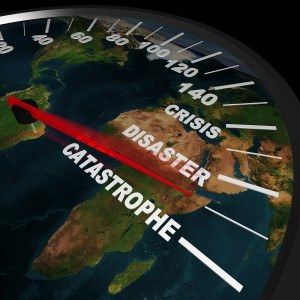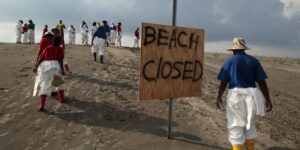 Insured losses for natural disaster totaled $22 billion during the first six months of 2017, with the cost stemming in large part from U.S.-focused, hail, heavy winds and tornadoes. Aon Benfield’s Impact Forecasting said in a new report.
Insured losses for natural disaster totaled $22 billion during the first six months of 2017, with the cost stemming in large part from U.S.-focused, hail, heavy winds and tornadoes. Aon Benfield’s Impact Forecasting said in a new report.
That result is actually lower than typical trends. Impact Forecasting said the number is 35 percent lower than the 10-year average of $34 billion, and 12 percent below the 17-year average of $25 billion.
“The financial toll from natural catastrophe events during the first six months of 2017 may not have been historic, but it was enough to lead to challenges for governments and the insurance industry around the world,” Steve Bowen, an Impact Forecasting director and meteorologist, said in prepared remarks.
He added this was particularly true for the U.S., where the insurance industry faced its second-costliest first half on record “following a relentless 6 months of hail-driven severe weather damage.”
Impact Forecasting’s report follows one from Munich Re released this week that said insurers paid $19.5 billion for natural disaster claims in the 2017 first half, 40 percent lower than the same period a year ago.
Overall, global economic losses from natural disasters in H1 2017 hit $53 billion, and that result is also below typical trends. The 10-year average for natural disaster-related economic losses is $122 billion, and the H1 result is a whopping 56 percent below this. The result is also 39 percent below the 17-year average of $87 billion.
It turns out that severe convective storm perils were the costliest disaster type in terms of economic losses in the first six months of 2017, with $26 billion in economic losses coming from U.S. storms, nearly half of the total. Severe convective storms also caused $17 billion in insured losses, 78 percent of the insured loss total. Of that number close to $16 billion came from “widespread hail, damaging straight-line winds and tornadoes in the U.S.,” Impact Forecasting said.
While natural disasters caused the deaths of at least 2,782 people through H1 2017, that’s the lowest figure since 1986. What’s more, the number is also much lower than the long-term average (1980-2016) of 40,867 fatalities. Of those H1 deaths, floods killed at least 1,806 people, Impact Forecasting noted.
According to the report, the U.S. handled 76 percent of the global losses sustained by public and private insurance entities during H1. Europe/Middle East/Africa and Asia Pacific each faced 10 percent. The rest of global insured losses landed in the Americas.
Other report findings:
- About 42 percent of H1 global economic losses were covered by insurance. This was above both the near- and medium-term average of 32 percent.
- Insurance take-up rates are growing in the Americas and the Asia-Pacific region.
- The costliest natural disaster of the first six months of 2017 was a multi-week flood from mid-June into early July that hit China’s Hangtze River basin and caused more than $6.4 billino in economic losses. More than 410,000 homes were damaged or destroyed along with lots of infrastructure; many crops were also submerged.
- Flooding in Peru from mid-January to March was the second-costliest event of H1, causing more than $3.2 billion in economic losses including damage and reconstruction costs.
Source: Aon Benfield/Impact Forecasting





















 Study: U.S. Companies Facing Class Actions at Highest Level in 13 Years
Study: U.S. Companies Facing Class Actions at Highest Level in 13 Years  Going, Going, Gone: ‘Disruption’ to Shrink Traditional Premiums for Auto
Going, Going, Gone: ‘Disruption’ to Shrink Traditional Premiums for Auto  Fitch: U.S. Cyber Insurers Saw Strong Profits, Slowdown in Premium Growth in 2023
Fitch: U.S. Cyber Insurers Saw Strong Profits, Slowdown in Premium Growth in 2023  InsurTech Profile: Optimalex’s AI Tools ‘Co-Pilot’ Alongside Human Expertise
InsurTech Profile: Optimalex’s AI Tools ‘Co-Pilot’ Alongside Human Expertise 



